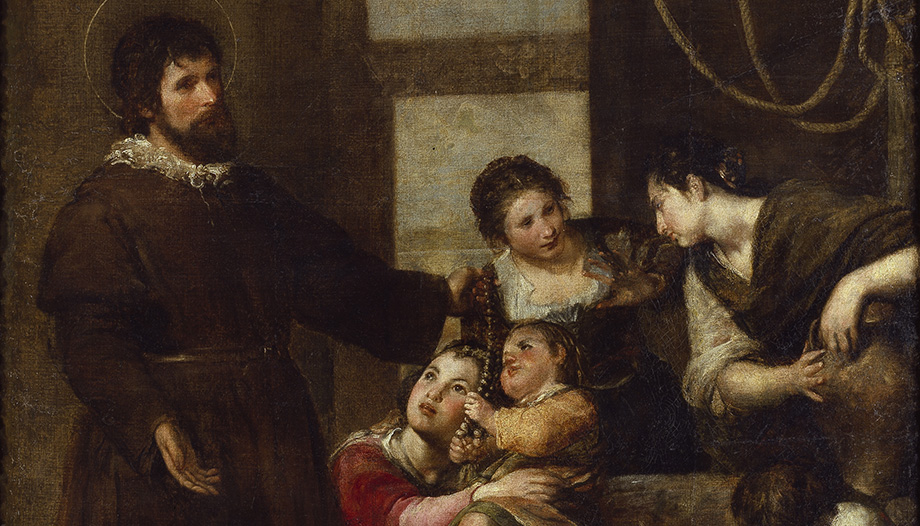On March 12, 1622, Pope Gregory XV solemnly canonized five saints who, with the passage of time, would be recognized as great figures in the history of the Church: St. Philip Neri, St. Teresa of Jesus, St. Ignatius of Loyola, St. Francis Xavier and St. Isidore Labrador.
The news spread among the Italians, perhaps moved by a certain envy, that on that day the Pope had canonized four Spaniards and one saint. What is certain is that, of the five new saints, four were relatively contemporary, while the cult of St. Isidore had been going on for centuries.
In the present year 2022 we celebrate the fourth centenary of this great event for the Church, and also the 850th anniversary of the popular devotion to St. Isidore Labrador since his death, which according to the sources took place in the year 1172.
To celebrate this event, the Holy See has granted the Archdiocese of Madrid a Jubilee Year of St. Isidore, which will last from May 15, 2022 to May 15, 2023.
Madrid thus joins the major celebrations that will take place around March 12, including a solemn celebration of the Eucharist presided over by Pope Francis at the Gesù in Rome, and a recently announced Jubilee Year of St. Teresa in the diocese of Avila.
Holiness in the life of the Church is felt in the sentiments of God's faithful people.
The processes of beatification and canonization are perhaps one of the ecclesiastical events where the most important role is played by the sensus fideliumIn them the Church listens to the voice of the faithful who, in a spontaneous way, moved internally by the Spirit, ask for solemn recognition of what the faithful already know with certainty: that this person has lived and died a holy life, fulfilling the will of God, and that he or she can be held up as a model and intercessor before the Father.
Only a century after the death of St. Isidore, the codex of John Deacon gathered all this fame of sanctity of the saintly farmer from Madrid, his abandonment to the will of God, his love for the poor and needy, his trusting prayer, his work lived under the provident gaze of the Father.
What the Christians of Madrid transmitted to each other was put in writing in this codex, and centuries later, as we have said, on March 12, 1622, it was solemnly recognized by the papal magisterium. His cult spread rapidly throughout the Church, and it is not uncommon to find chapels and hermitages dedicated to this saint, who was also named patron saint of Spanish farmers by Pope John XXIII in 1960.
In Madrid, in addition, the famous relic of the sacred incorrupt body of Saint Isidro Labrador is kept and venerated, which has been preserved uninterruptedly since his death, and which, beyond the miracles of which he has been the protagonist, is another example of the devotion that the people of Madrid, with the kings and authorities at the head, have paid to this great saint.
When Christians venerate the relics of the saints, they do so supported by the certainty of the resurrection of the flesh promised by the Lord: our bodies are called to glory. On occasions of special relevance for the life of the city of Madrid and the archdiocese, the urn containing the incorrupt body of the saint has been opened so that the faithful could venerate his relics closely.
One of the central events of this Jubilee Year will be a solemn public exposition of the incorrupt sacred body for a whole week, something that has not taken place for more than thirty years, since the last one took place in 1985, on the occasion of the centenary of the diocese of Madrid.
And what does a small worker who lived and died more than nine centuries ago have to tell us today?
In a society so in need of models of family life, St. Isidore, together with his wife, St. Maria de la Cabeza, and his son, Illán, are given to us as a concrete example of a family that lives in mutual love. In a society so in need of encouragement and example for workers, the saintly farmer is given to us as a model of work that trusts in the providence of God the Father.
In a society, in short, jaded by lies and empty of meaning, in St. Isidore those words of the Lord are fulfilled: "I thank you, Father, Lord of heaven and earth, that you have hidden these things from the wise and learned and revealed them to the simple. Yes, Father, it seemed better to you".
Episcopal Delegate for the Causes of the Saints of the Archdiocese of Madrid








